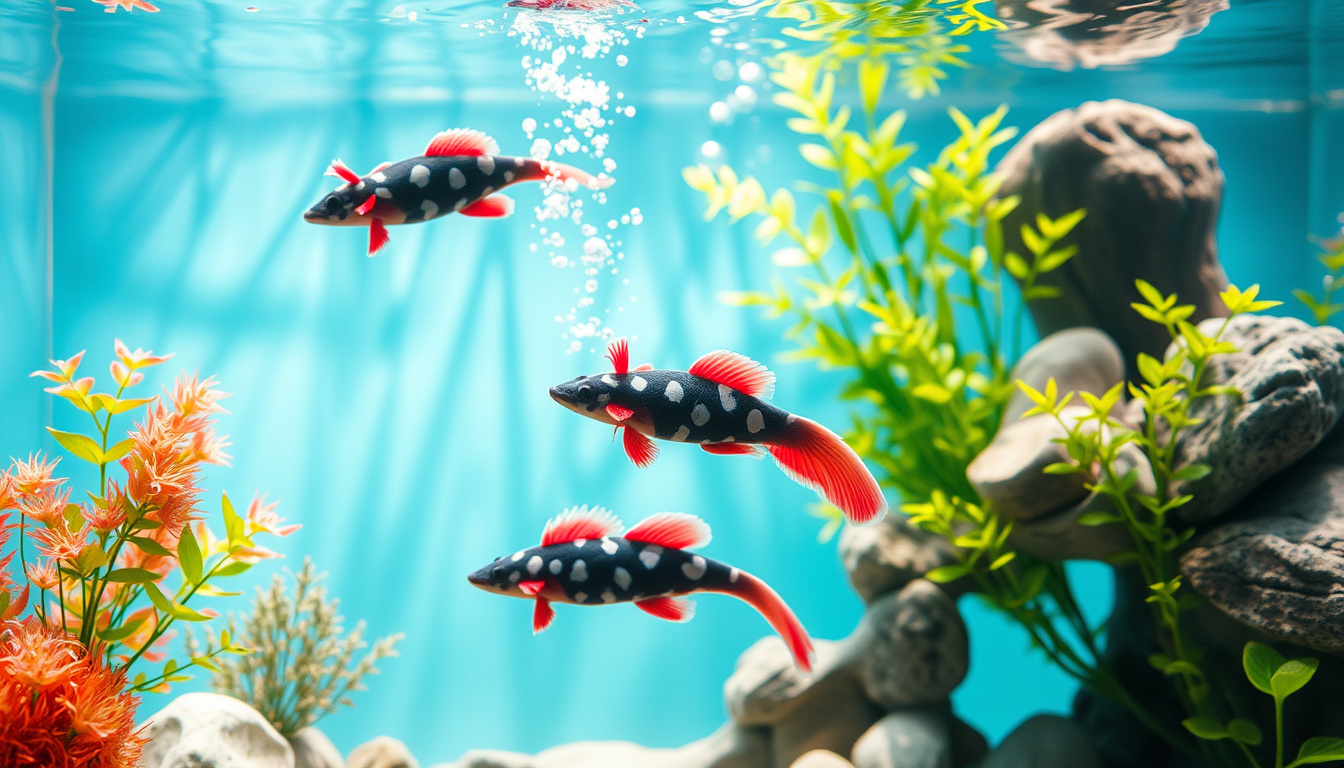If you’re a young aquarium enthusiast looking to embark on the journey of keeping axolotls, you’ve stumbled upon one of the most fascinating and adorable creatures in the aquatic realm!
However, to ensure your new slimy friend thrives, it’s crucial to understand axolotl water parameters.
These parameters aren’t just numbers; they form the backbone of a healthy environment where your axolotl can flourish.
In this guide, we’ll explore the essential aspects of axolotl water parameters—from temperature to pH levels and everything in between—so you can create the perfect habitat for your gilled buddy.


Ammonia, Nitrite, and Nitrate: Critical Levels Explained
When caring for your axolotl, understanding the essential axolotl water parameters is crucial for their health and wellbeing.
These parameters primarily involve ammonia, nitrite, and nitrate, all of which play a vital role in maintaining a suitable aquatic environment.
Ammonia should be at a critical level of 0 ppm (parts per million) because even low levels can be toxic to your axolotl.
As ammonia breaks down, it converts into nitrite, which is also harmful if it reaches levels above 0 ppm.
Lastly, as the nitrogen cycle progresses, nitrate is produced.
While nitrate is less toxic than its predecessors, keeping it below 40 ppm is ideal to prevent stress and health issues in your axolotl.
Regularly testing these axolotl water parameters and making necessary adjustments ensures a safe and thriving habitat for your unique aquatic friend.
The Importance of Water Hardness for Axolotl Well-being
When it comes to keeping axolotls healthy and happy, understanding axolotl water parameters is crucial, especially water hardness.
Water hardness refers to the concentration of dissolved minerals, primarily calcium and magnesium, in the water.
For axolotls, an ideal water hardness ranges between 3-20 dGH (degrees of General Hardness).
Too soft water can lead to stress and discomfort, while excessively hard water can cause health issues, disrupting their ability to regulate buoyancy.
Monitoring these axolotl water parameters not only ensures they thrive in their aquatic environment but also contributes to their overall well-being.
Regular testing and adjustments can help maintain these levels, providing your axolotl with a stable and suitable habitat to explore and grow.
Frequently Asked Questions
What are the key water parameters needed for a healthy axolotl habitat?
The key water parameters for a healthy axolotl habitat include temperature (16-18°C or 60-64°F), pH level (between 6.5 and 7.5), ammonia (0 ppm), nitrite (0 ppm), and nitrate (below 40 ppm).
Additionally, moderate water hardness is important for their overall health.
How can I maintain the optimal temperature for my axolotl tank?
To maintain the optimal temperature for your axolotl tank, you can use an aquarium heater with a thermometer to monitor the water temperature.
Ensure good airflow and avoid direct sunlight on the tank to prevent overheating.
What is the ideal pH level for axolotl water?
The ideal pH level for axolotl water is between 6.5 and 7.5.
Regular testing with pH strips or a pH meter can help you monitor and maintain this level within the recommended range.
How often should I perform water changes in an axolotl aquarium?
It is recommended to perform partial water changes of about 20-30% weekly to maintain water quality and remove accumulated toxins.
Regular testing for ammonia, nitrites, and nitrates will help determine the need for more frequent changes.
What types of filtration are best for an axolotl tank?
Canister filters or sponge filters are ideal for axolotl tanks as they provide efficient filtration while being gentle on the delicate skin and gills of axolotls.
Ensure that the filter flow is not too strong to avoid stressing the animals.
[center][/center]
[center][color=rgb(10, 10, 10)][highlight=rgb(255, 248, 231)] [/highlight][/color][color=rgb(10, 10, 10)][highlight=rgb(255, 248, 231)]As an Amazon Affiliate,[/highlight][/color][color=rgb(10, 10, 10)][highlight=rgb(255, 248, 231)] [/highlight][/color][color=rgb(10, 10, 10)][highlight=rgb(255, 248, 231)]Savvy Keto makes a commission[/highlight][/color][color=rgb(10, 10, 10)][highlight=rgb(255, 248, 231)] [/highlight][/color][color=rgb(10, 10, 10)][highlight=rgb(255, 248, 231)](at no extra cost to you)[/highlight][/color][color=rgb(10, 10, 10)][highlight=rgb(255, 248, 231)] [/highlight][/color][color=rgb(10, 10, 10)][highlight=rgb(255, 248, 231)]on purchases you make[/highlight][/color][color=rgb(10, 10, 10)][highlight=rgb(255, 248, 231)] [/highlight][/color][color=rgb(10, 10, 10)][highlight=rgb(255, 248, 231)]thru links on this site.[/highlight][/color][/center]

